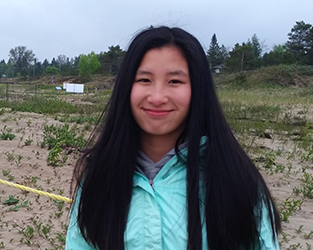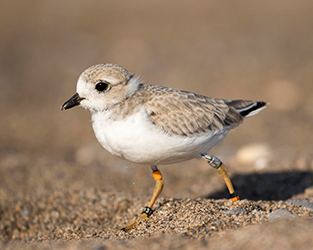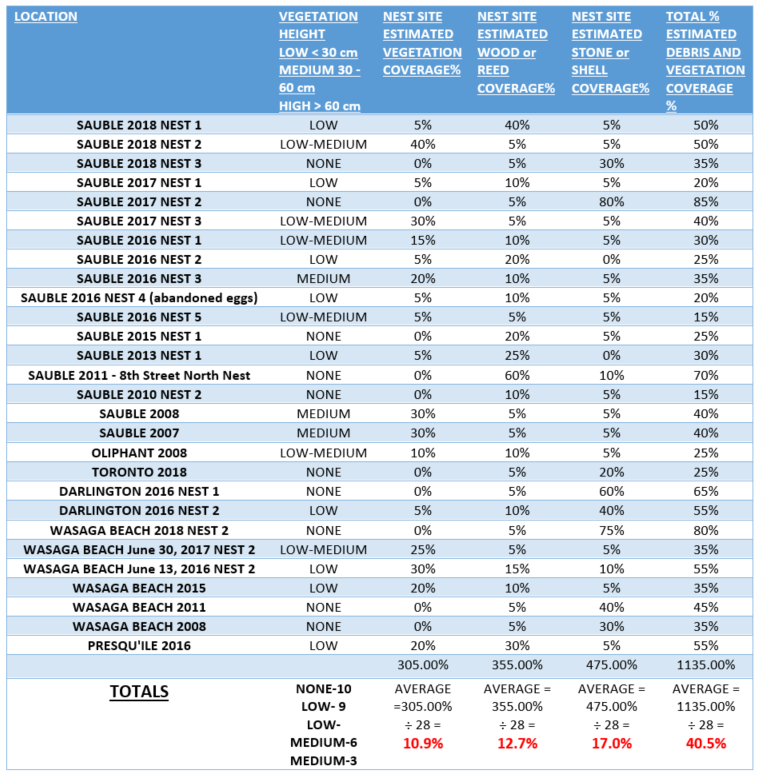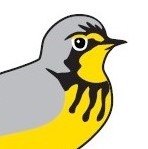
Photo: Andrea Gress
Islay Graham, age 13, first connected with Piping Plovers when visiting their nesting site at Sauble Beach, Ontario.
“I went to see their nest enclosure and read the background information about them,” recalls Islay. “My interest continued and I was able to get involved with the Plover Lovers, which enlarged my passion for the Piping Plovers over the summer.”
While volunteering with Plover Lovers (one of the groups involved in Piping Plover Conservation in Ontario), Islay collected data on the birds’ behaviours and habitats. She went on to complete a research project that swept up awards at both the 2019 Senior Bluewater Regional Science & Technology Fair in Owen Sound, Ontario and the Canada-Wide Science Fair in Fredericton, New Brunswick. She also earned the opportunity to present her work at the International Science and Engineering Fair in Anaheim, California in 2020.
Islay’s project focused on whether plovers prefer a manicured beach or a more natural one. This has been a point of conversation at Sauble Beach, where tourists and plovers share space by the water. Islay found that plovers prefer a beach with a “wrack line” of debris to a clean beach. Her results are timely and helpful for informing the discussion on what type of beach maintenance is in the interest of this endangered species.
We noticed a lot of interest in response to the news stories about Islay on Bird Studies Canada’s social media channels, so we decided to reach out to her to learn more. We hope you enjoy this interview!
Bird Studies Canada: Why did you choose Piping Plovers as the topic for your science fair project?
Islay Graham: I chose the Piping Plovers because I thought it would be a great project that has a purpose and a meaningful issue towards our environment. Before, I had been struggling to find a project idea that really interested me. When I learned about the plovers, I realized that it was an incredible opportunity to study an endangered species that is living right near me … I also wanted to find a way to determine their ideal habitat so they could increase their numbers.

One of the figures from Islay’s poster.
Islay Graham, 2019.
BSC: What were the main results of your Piping Plover research project?
IG: My main results/conclusions were that Piping Plovers do not prefer a clean beach. The wrack line clearly showed from all my observations that it was an essential aspect towards a plover’s habitat. Raking the wrack line before the plovers arrive at Sauble Beach in the spring could potentially be damaging towards this endangered species and as well, hasten their extinction.
BSC: How did you feel when your project won gold at the regional science fair in Owen Sound, and then when it won more awards at the Canada-wide Science Fair in New Brunswick?
IG: I was definitely shocked and it felt completely unexpected. I was beyond happy and could not believe what was happening in the moment. It was so incredible and an unforgettable experience! It also showed me that hard work and dedication really did and does pay off.
BSC: Did you enjoy doing research on Piping Plovers? Are you interested in doing more scientific research on birds (or on another subject) in the future?
IG: Yes! The Piping Plovers were a very interesting topic to research. I learned a lot … I also met many interesting people who were working to learn about and help the plovers, including Andrea Gress from Bird Studies Canada. More scientific research in the future is for sure something I plan on doing. Hopefully I will do some more research on birds, but I am also interested in studying medical and health related topics.
BSC: Do you have a favourite memory from the time you have spent observing Piping Plovers at the beach?
IG: I think having the chance to observe the growth of a plover from its younger age as a chick to an adult was for sure a great memory. It was really cool to be able to see the changes over the period of time and as well as recording their behaviours. There were many different behaviours I had observed and although a lot were the same, there were some interesting behaviours as well. For example, I was shocked to see the chick fly for the first time!

Piping Plover Photo: Mark Peck
BSC: Is there anything else about yourself, your project, or Piping Plovers that you would like to share with our readers?
IG: I live with my family on a 20-acre property at the edge of the Niagara Escarpment. I am a grade 7 French Immersion student and attend École Hepworth Central Public School. I have competed in my regional Science Fair four times now. I take piano lessons and play most sports with volleyball being my particular favourite. I like learning and doing new things. I try my best to be positive, see the good in everyone and look for opportunities that come my way. I hope my project’s information was interesting to read and possibly helpful in the future.
Thank you to Islay for helping Piping Plovers and for taking the time to answer our questions!
You can learn more about plovers at our webpages dedicated to their conservation in Ontario or in New Brunswick and Nova Scotia.

“Historical Study of Nest Sites, 2007-2018,” another figure from Islay’s poster.
Islay Graham, 2019.

